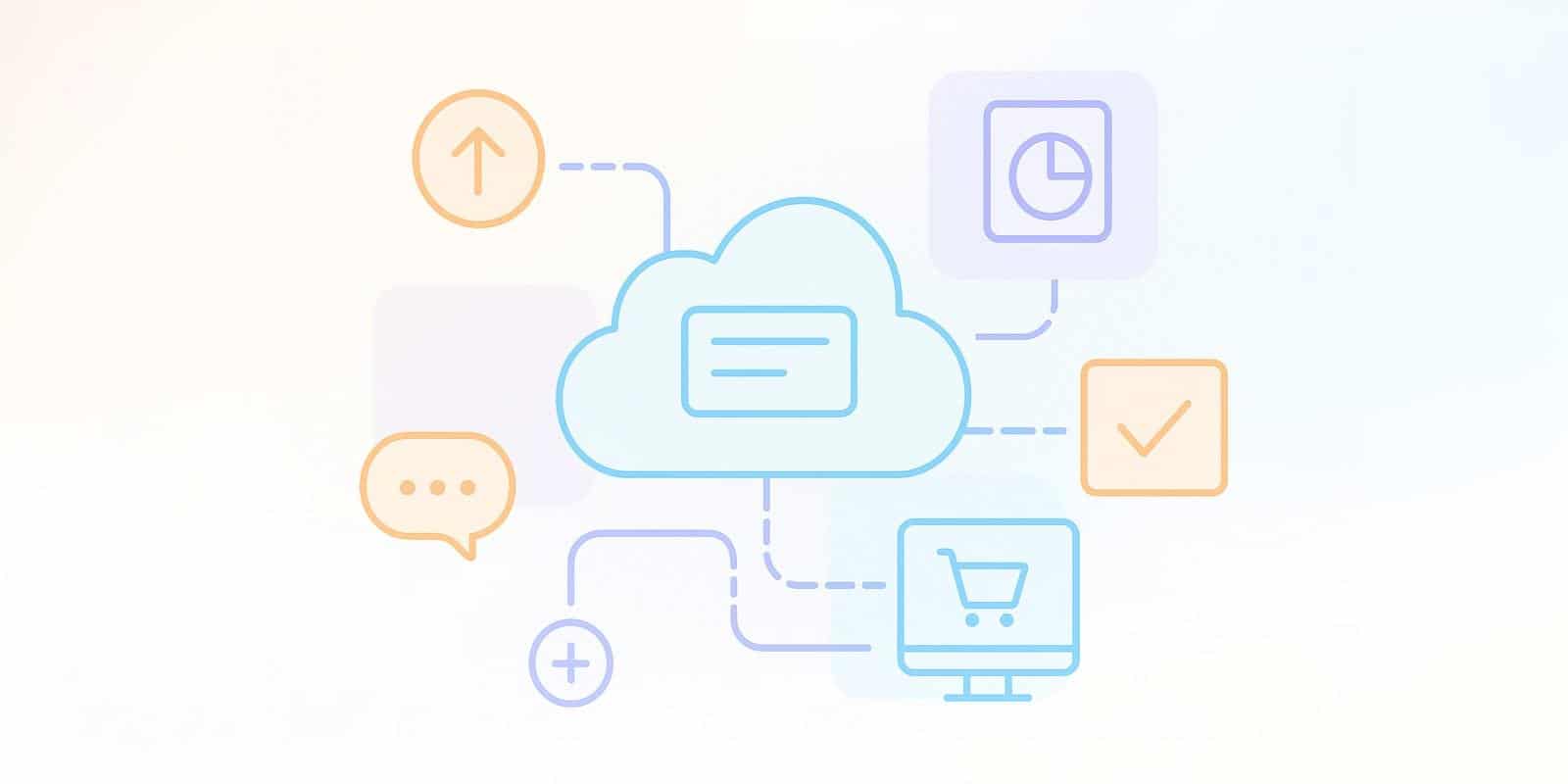Estratégias de crescimento
O que são vendas cruzadas SaaS?

O que são vendas cruzadas SaaS?
As vendas cruzadas de SaaS são produtos ou serviços adicionais e relacionados oferecidos a clientes existentes para complementar a sua compra original.
Esta estratégia visa afetar o valor total derivado da utilização de um produto SaaS por parte do cliente. A venda cruzada eficaz baseia-se na identificação de combinações de produtos lógicas e na utilização dos dados dos clientes para personalizar ofertas sem os sobrecarregar.
Venda cruzada vs. upselling em SaaS: Qual é a diferença?
A principal diferença é o que vende.
O cross-selling consiste em sugerir produtos diferentes e relacionados para expandir o conjunto de ferramentas de um cliente e incentivar uma adoção mais ampla do produto SaaS. Em contrapartida, o upselling consiste em oferecer uma versão atualizada ou mais cara do mesmo produto SaaS para aumentar o valor da transação.
A venda cruzada (cross-selling) num produto SaaS é semelhante a um cliente que subscreve uma plataforma de gestão de projetos e a quem depois é oferecida uma ferramenta de CRM (Gestão de Relacionamento com o Cliente) separada, mas integrada, para gerir as comunicações com os clientes.
O upselling refere-se a um cenário de compra no qual o mesmo consumidor é incentivado a atualizar a sua subscrição de um plano ‘Básico’ para um nível ‘Pro’ para obter acesso a serviços premium, como análises, controlo de tempo ou integrações de software.
Por que o upselling e o cross-selling são importantes para empresas de SaaS?
Estas estratégias são cruciais porque:
- O Valor Vitalício do Cliente (CLV) pode ser afetado ao incentivar os clientes existentes a aumentar o seu engajamento.
- Gerar receita de clientes atuais apresenta uma estrutura de custos potentially diferente da de aquisição de novos clientes. Cerca de 44% de SaaS empresas relatam que estas estratégias representam até 10% da sua nova receita.
- Aumente a lealdade do cliente oferecendo mais valor e integrando-se mais profundamente no fluxo de trabalho diário do cliente.
Quais são alguns exemplos eficazes de cross-selling em SaaS?
Exemplos focados em soluções complementares oportunas podem estar relacionados com alterações na experiência do utilizador.
As táticas comuns incluem:
- Sugerir add-ons nas páginas de produto ou durante o processo de checkout.
- Fazer ofertas em páginas de “agradecimento” pós-compra.
- Utilizar e-mail marketing com texto conversacional para apresentar produtos relacionados a novos utilizadores.
- A oferta de testes gratuitos ou créditos para produtos complementares pode permitir que os clientes percebam o seu valor potencial.
Que produtos são adequados para a venda cruzada de SaaS?
Os produtos adequados para venda cruzada são aqueles que complementam a oferta principal e resolvem um problema relacionado do cliente.
Devem:
- Integrar-se no fluxo de trabalho existente do cliente.
- Relacionar-se com as necessidades em evolução do cliente.
- Fornecer opções de faturação flexíveis, como a mensal assinaturas, pode influenciar o interesse do cliente.
Qual é o processo para identificar clientes de SaaS para a venda cruzada?
O processo começa com a análise de dados para encontrar as oportunidades certas.
- Analise os Dados do Cliente: Observe o comportamento de utilização, o histórico de compras e o feedback direto.
- Segmente seus clientes: Agrupe-os com base em características comuns, como o setor, o tamanho da empresa ou os padrões de utilização, para personalizar a sua abordagem.
- Identifique Oportunidades: Dentro de cada segmento, analise o uso para encontrar lacunas onde um produto adicional poderia agregar valor significativo. Por exemplo, um cliente que usa frequentemente um recurso básico de relatórios pode ser um candidato perfeito para um complemento de análise avançada.
- Vise os usuários engajados: Clientes que já adotaram um complemento costumam ser candidatos ideais para outros.
Qual é o momento certo para fazer cross-sell para clientes de SaaS?
O momento é crucial. O momento ideal é depois de um cliente ter reconhecido o valor da sua compra inicial e estar ativamente engajado. Isto indica interação com funcionalidades-chave e sugere um potencial interesse em expandir as capacidades.
O engajamento pode ser monitorado com software de sucesso do cliente para determinar os momentos adequados.
Como desenvolvo uma campanha de cross-selling de SaaS bem-sucedida?
Uma campanha bem-sucedida baseia-se na compreensão e na personalização.
- Compreenda as Necessidades do Cliente: Segmente os seus clientes base por dados demográficos, comportamentos de compra e preferências.
- Crie Campanhas Personalizadas: Adapte as suas ofertas e mensagens às necessidades de cada segmento de clientes.
- Inove Continuamente: Adicione novos produtos ou funcionalidades que incentivem os clientes a expandir a sua utilização.
- Analise e Aprimore: Utilize a análise de dados e o feedback dos clientes para identificar as melhores oportunidades de cross-selling e melhorar continuamente a sua estratégia.
Quem é o responsável pela venda cruzada numa empresa de SaaS?
O cross-selling é uma responsabilidade partilhada, que recai principalmente sobre duas equipas:
- Equipe de Vendas: Liderada por gerentes de vendas, esta equipe é responsável por impulsionar a receita, o que inclui iniciativas de venda cruzada.
- Gerentes de Sucesso do Cliente (CSMs): Como apoiam os clientes na adoção do produto e compreendem seus objetivos, os CSMs estão na posição perfeita para identificar e agir em oportunidades de venda cruzada.
Conclusão
As estratégias de venda cruzada de SaaS podem influenciar os números de vendas e a natureza do relacionamento com o cliente. Abordar questões relacionadas para os usuários pode influenciar sua lealdade e potencialmente afetar parcerias de longo prazo.